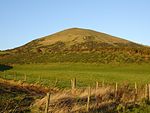Largo railway station
1857 establishments in Scotland1965 disestablishments in ScotlandBeeching closures in ScotlandDisused railway stations in FifeFife railway station stubs ... and 5 more
Former North British Railway stationsPages with no open date in Infobox stationRailway stations in Great Britain closed in 1965Railway stations in Great Britain opened in 1857Use British English from November 2019
Largo railway station served the village of Lower Largo, Fife, Scotland from 1857 to 1965 on the East of Fife Railway.
Excerpt from the Wikipedia article Largo railway station (License: CC BY-SA 3.0, Authors).Largo railway station
Station Park,
Geographical coordinates (GPS) Address Nearby Places Show on map
Geographical coordinates (GPS)
| Latitude | Longitude |
|---|---|
| N 56.2128 ° | E -2.9398 ° |
Address
Station Park
KY8 6DT
Scotland, United Kingdom
Open on Google Maps






